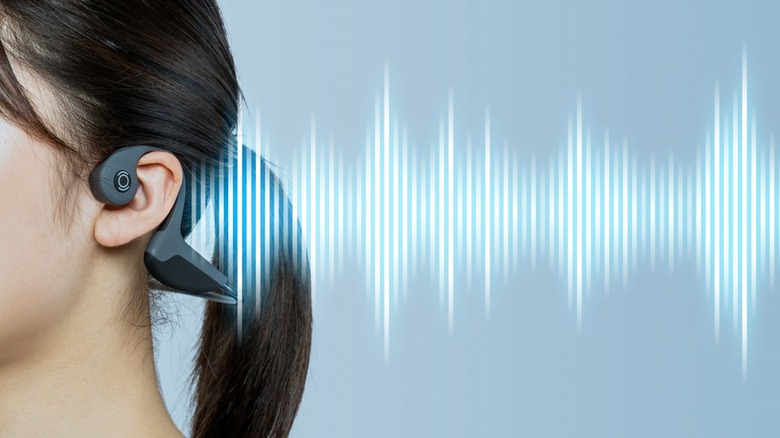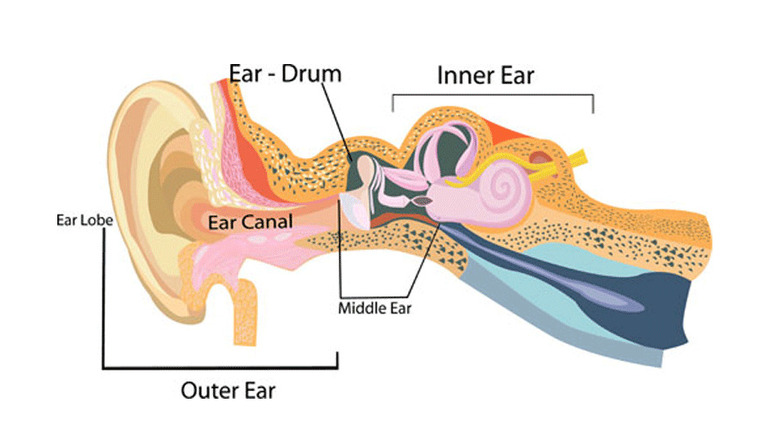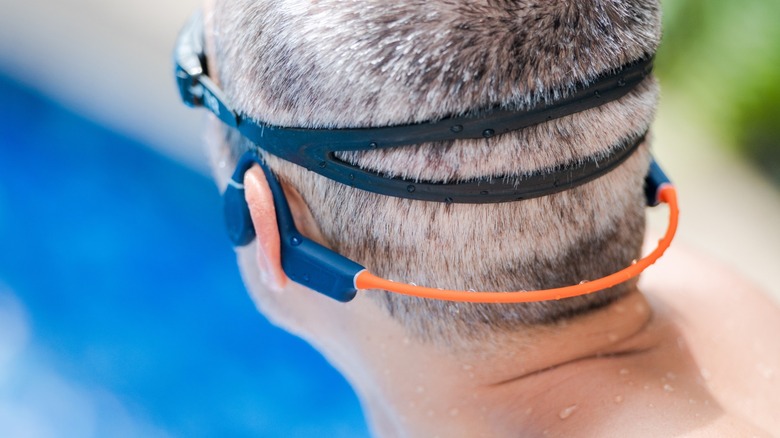Bone Conduction Headphones Explained: How They Work, And Are They Safe?
In the world of audio listening devices, there are many options to choose from. While some prefer the earbud style like Apple AirPods, others prefer over-the-ear headphones. Luckily, for those who enjoy choice, a third style of headphones is starting to become popular, called bone conduction headphones. However, with every new piece of technology, there are reasonable questions about how it works and whether it's safe to use. This concern is even more valid in the wearables category.
As a peripheral, headphones are unlike other equipment as they can actually cause long-lasting damage if used improperly, as exposure to noises over a certain decibel can cause long-term hearing loss. Therefore, it's reasonable to be concerned or at least curious about the claims that the new technology is safer than traditional headphones. The reality of whether bone conduction headphones are more safe may be more complicated than you originally thought. While bone conduction headphones are not dangerous when used properly — like many tech products — there are pros and cons to using the innovative new audio device.
What are bone conduction headphones?
Bone conduction headphones transmit sound via vibrations through bones in your head and jaw rather than delivering audio through your ear canal. Unlike traditional headphones or earbuds that sit inside or over the ear, bone conduction headphones sit on the outside of the ear. According to the Salus University Pennsylvania Ear Institute, this design lets the device bypass the eardrum to relay sound directly to the inner ear. This audio transmission method lets users hear sound underwater, just as they would with traditional headphones.
Similarly, this fact is also why you can hear yourself chewing and is the same way that famous composer Ludwig van Beethoven could hear the music he played even though he was hearing impaired. While the design of bone conduction headphones provides many benefits, it also has downsides and may not be for everyone. Before tossing out your existing technology to pick up this new audio listening method, you should weigh the pros and cons.
Are bone conduction headphones safe?
There is a common misconception that it's impossible to damage your hearing with bone-conduction headphones, but that's not entirely true. According to the CDC, hearing loss occurs when there is damage to the inner ear, also known as the cochlea. Loud sounds and even a one-time exposure to an extremely loud sound can cause damage to the membranes and cells within the cochlea, which causes the cells to overwork and die.
Since bone conduction headphones transmit sound directly to the cochlea, they function similarly to traditional headphones regarding the potential to damage hearing. Using bone conduction headphones protects your tympanic membrane or your eardrum, which could form perforations leading to hearing loss when listening to music too loudly, according to a study published in the National Library of Medicine. The CDC states prolonged sound over 70 dB can cause hearing loss, and loud noises over 120 dB can cause immediate hearing loss, which can occur with either headphone style.
Bone conduction headphones are great for an active lifestyle and the hearing-impaired
Bone conduction headphones are great for an active lifestyle, as they provide an open ear to listen to your surroundings, rather than noise-canceling earbuds that eliminate the sound around you. That being said, studies published in the National Library of Medicine argue that the headphones may still impact the listener's awareness of their auditory environment, so it's not a foolproof method to avoid accidents. However, it might still be a more viable way to multitask when listening to multiple audio sources.
Bone conduction headphones are also an excellent solution for those who must wear a hearing aid, as the headphones utilize a different method of delivering sound and fit over the ear, unlike a traditional earbud that would sit inside of it. Additionally, some people who can't hear in one ear can use the headphones to hear in surround sound, which wouldn't be achievable with traditional headphones. Lastly, the headphones can help those with certain kinds of hearing loss or ear conditions like tinnitus to listen to podcasts and music more easily, though this does not apply to all types of hearing impairments.
Bone conduction headphones may negatively impact audio quality
For audiophiles, there's a chance that bone-conduction headphones may not be for you. Because of their design, the headphones lack isolation and noise-canceling, which can overall degrade the audio due to interfering ambient noise in your surroundings. Typically, good noise-canceling headphones block out ambient noise around people, enabling them to focus better on the details of the audio.
Additionally, because of the new design, it's more than possible that bone conduction headphones feel uncomfortable, especially for those not used to wearing things on the outside part of their ear. Also, they may not be for everyone, especially those who work professionally in sound or care a lot about audio quality.
Ultimately, it's important that regardless of whether you use bone-conduction headphones, you listen to your music or podcasts at a reasonable volume. Just because they are bone conduction doesn't mean that you should listen to music at the max level, as it won't protect you from losing your hearing. The choice of whether to get bone-conduction headphones will largely depend on your lifestyle and what you're looking to get out of your headphones.




